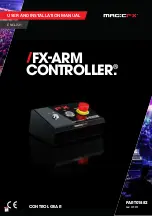
3
Always wear approved eye protection.
3
Always operate the vehicle in a well-ventilated area. Do not inhale exhaust gases - they are very poisonous!
3
Always keep yourself, tools, and test equipment away from all moving or hot engine parts.
3
Always make sure the vehicle is in Neutral (manual transmission) or Park (automatic transmission) and that the parking brake is firmly
applied. Block the drive wheels.
3
Always keep handy a fire extinguisher suitable for fuel/electrical/chemical fires.
3
Always turn ignition key OFF when connecting or disconnecting electrical components, unless otherwise instructed.
3
Use shop rags to cover fuel line fittings when connecting or disconnecting fuel lines or gauges. Avoid contact with petrol.
3
Dispose of all rags properly.
3
Clean up all fuel spills immediately.
3
Keep away from engine cooling fan. On some vehicles, the fan may start up unexpectedly.
3
You must follow vehicle service manual cautions when working around the air bag system. If the cautions are not followed the air bag
may deploy unexpectedly, resulting in personal injury. Note that the air bag can still deploy several minutes after the ignition key is turned
OFF (or even if the battery is disconnected) because of a special energy reserve module.
3
Always follow vehicle manufacturer's warnings, cautions and service procedures.
3
Always relieve fuel pressure before disconnecting fuel lines.
3
The Fuel Injector & Harness Tester requires an optional fuel pressure gauge VS210 to be used for fuel injector testing. Always follow all
safety guidelines and testing procedures contained in the instruction manual provided with the fuel pressure gauge.
In recent years, fuel injection has become standard equipment on most new vehicles.
Although far more reliable and efficient than carburettors, fuel injection systems have
their own unique problems. In many cases, fuel injection problems can be linked to
blocked or sticky fuel injectors. Testing fuel injectors was once a complicated and
inaccurate procedure, but, with the VS211 Fuel Injector & Harness Tester, you can now
quickly and easily locate any malfunctioning fuel injector without removing it from the vehicle.
The VS211 Fuel Injector & Harness Tester is a hand-held device used to check the
function of fuel injectors and their associated wiring harnesses on most vehicles. The
VS211 tests for clogged or leaking fuel injectors by using a single, half-second pulse.
Multiple 5-millisecond pulses are used to test for sticky or sluggish fuel injectors. By
using a fuel pressure gauge VS210 (optional) and comparing fuel pressure differences
VS211
FUEL INJECTOR & HARNESS TESTER
The use of symbols in this document is to attract your attention to possible danger. The symbols and warnings themselves do not eliminate any danger, nor are they substitutes for proper
accident prevention measures.
Thank you for purchasing a Sealey product. Manufactured to a high standard this product will, if used according to these instructions and
properly maintained, give you years of trouble free performance.
IMPORTANT
PLEASE READ THESE INSTRUCTIONS CAREFULLY. NOTE THE SAFE OPERATIONAL REQUIREMENTS, WARNINGS, AND CAUTIONS.
USE THIS PRODUCT CORRECTLY AND WITH CARE, FOR THE PURPOSE FOR WHICH IT IS INTENDED. FAILURE TO DO SO MAY CAUSE
DAMAGE, OR PERSONAL INJURY, AND WILL INVALIDATE THE WARRANTY.
1. SAFETY INSTRUCTIONS
2. INTRODUCTION
7
Never lay tools on vehicle battery. You may short the terminals together, causing harm to yourself,
the tools, or the battery.
7
Never smoke or have open flames near vehicle. Vapours from petrol and charging batteries
are highly flammable and explosive.
7
Never leave vehicle unattended while running tests.
7
Do not confuse Air Conditioning schrader valves with the fuel rail test port.
as each fuel injector is pulsed, faulty injectors can quickly be identified. In addition, the VS211 Fuel Injector &
Harness Tester is able to test fuel injection wiring harnesses for faulty wiring and connectors.
Power LED (1)
- As soon as the battery clips are attached to the vehicle battery the Power LED will light. This
verifies a good power connection.
Continuity LED (2)
- Indicates a good connection to the fuel injector or fuel injector wiring harness. This must be
lit before proceeding with any testing.
Output LED (3)
- Indicates the presence of a signal from the vehicle's on-board computer to the fuel injector OR
a pulse from the tester to the fuel injector.
Trigger Button (4)
- Activates fuel injector test pulses.
Injector/Harness Switch (5)
- Selects fuel injector or fuel injector wiring harness testing.
Single/Multiple Pulses Switch (6)
- Switches between one half-second and multiple 5-millisecond test pulses,
produced when the Trigger Button is pressed.
Battery Clips (7)
- Attach to vehicle battery to power the Fuel Injector & Harness Tester.
Fuel Injector/Wiring Harness Interface Cable (8)
- Connects the Fuel Injector & Harness Tester to a fuel injector
or fuel injector harness for testing via adaptors.
Fuel Injector/ Wiring Harness Adaptors (fig.1)
- Used to connect interface cable to vehicle. Since all vehicles
are different, several colour coded adaptors are included.
Same colour adaptors are used for the same application - one
adaptor is used to connect the interface cable to the fuel injector
and the other connects the interface cable to the wiring harness.
fig. 1
VS211-0527-(1)-240599






















